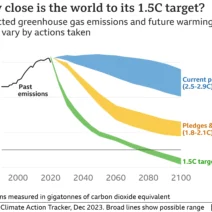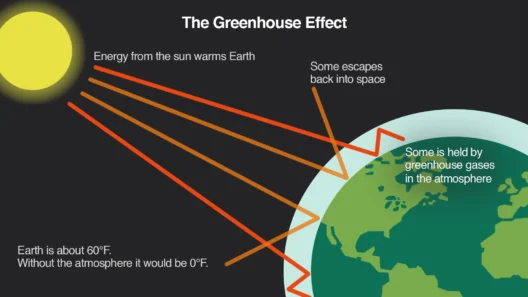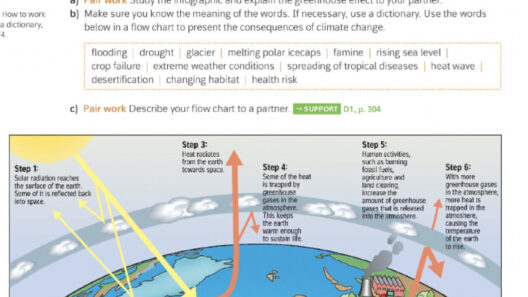The greenhouse effect is a natural phenomenon that plays a pivotal role in maintaining Earth’s temperature and sustaining life. However, the intricate mechanisms of this effect continue to garner attention, particularly as humanity confronts the challenges of climate change. Understanding how the greenhouse effect operates is crucial for both recognizing the implications of human activity on our planet and developing strategies for mitigation.
At its core, the greenhouse effect involves the trapping of heat within the Earth’s atmosphere, a process that occurs primarily due to greenhouse gases. This phenomenon can be likened to a blanket that envelops the planet, allowing warmth to be retained. The complexity of this system is influenced by various factors, including solar radiation, atmospheric composition, and human activity.
The Role of Solar Radiation
The sun serves as the primary source of energy for our planet. Solar radiation enters the Earth’s atmosphere in the form of visible light and ultraviolet (UV) rays. While some of this radiation is absorbed by the Earth’s surface, warming it, a significant portion reflects back into space. This balance is critical for maintaining a stable climate.
When solar radiation strikes the Earth, it is transformed into infrared radiation, a form of energy that is less visible but critical for temperature control. Unfortunately, infrared radiation does not escape as easily as it comes in. This is where greenhouse gases come into play.
Greenhouse Gases: The Heat Trappers
Greenhouse gases, including carbon dioxide (CO2), methane (CH4), and nitrous oxide (N2O), are present in the atmosphere and contribute to the greenhouse effect. These gases possess a unique ability to absorb and re-emit infrared radiation, effectively trapping heat within the atmosphere.
Carbon dioxide, one of the most prevalent greenhouse gases, is released through both natural processes, such as respiration and decomposition, and human activities, notably the burning of fossil fuels. Methane, which is significantly more effective at trapping heat than CO2, emanates from agricultural practices, landfills, and energy production. Nitrous oxide, meanwhile, is associated with agricultural fertilizers and industrial processes.
Despite their relatively low concentrations, these gases play a substantial role in enhancing the greenhouse effect. An increase in the concentration of greenhouse gases can lead to a significant rise in global temperatures, which in turn influences weather patterns, sea levels, and ecosystems.
The Feedback Mechanism: A Double-Edged Sword
The interactions within the climate system exhibit a feedback mechanism that can either exacerbate or mitigate the effects of warming. For instance, as global temperatures rise, polar ice caps and glaciers melt, resulting in a decrease in the Earth’s albedo—the reflectivity of the Earth’s surface. With less ice to reflect sunlight back into space, more energy is absorbed, further accelerating warming.
Conversely, increased moisture in the atmosphere due to higher temperatures can enhance cloud cover, which may have a cooling effect by reflecting solar radiation. However, this effect is complex and varies across different regions and weather patterns.
Another crucial feedback loop involves the absorption of carbon dioxide by oceans. Warmer ocean temperatures can lead to decreased ability of seas to absorb CO2, thus releasing more greenhouse gases back into the atmosphere. This creates a perilous cycle that underscores the urgency of understanding these interactions.
Impacts of the Greenhouse Effect
The consequences of an enhanced greenhouse effect are profound and wide-ranging. Climate change is perhaps the most visible impact, manifesting in the form of extreme weather events, sea level rise, and shifts in global climate patterns. Heatwaves, hurricanes, and unprecedented rainfall are all linked to alterations in the atmospheric balance.
Biodiversity is also threatened as ecosystems struggle to adapt to changing temperatures and disrupted habitats. Species extinction rates have accelerated, prompting conservationists to advocate for sustainable practices and policies aimed at reducing greenhouse gas emissions.
Human health is additionally at stake. Rising temperatures can lead to health hazards, including heat-related illnesses and the proliferation of vector-borne diseases. Vulnerable communities disproportionately bear the brunt of these changes, necessitating a focus on climate justice and equitable solutions.
Tackling the Challenge: Mitigation and Adaptation
Addressing the challenges posed by the greenhouse effect requires a multifaceted approach encompassing both mitigation and adaptation strategies. Mitigation involves reducing the output of greenhouse gases through renewable energy sources, enhanced energy efficiency, and reforestation efforts. Transitioning to a low-carbon economy is imperative for curbing emissions and fostering sustainable development.
On the adaptation front, communities must prepare for and respond to the impacts of climate change. This includes investment in resilient infrastructure, updated agricultural practices, and effective water management. Education and public awareness play crucial roles in fostering community involvement and collective action against climate change.
As we navigate the complexities of the greenhouse effect, it is essential to recognize the interconnectedness of ecological and social systems. By understanding the mechanisms behind Earth’s warming, we can empower individuals and communities to take decisive action, ensuring that the planet remains habitable for generations to come.
Ultimately, the greenhouse effect is a compelling reminder of the delicate balance of our planet’s systems. It highlights the importance of stewardship and responsibility as we strive to mitigate our impact and build a sustainable future.






